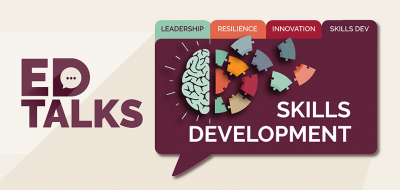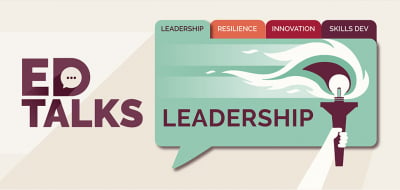The world is now fully engulfed in a work from home paradigm. As South Africa tackles the next phases of the lockdown, working remotely appears to be part of the foreseeable future. While telecommuting is not unusual for some employees, having an entire workforce working from home with just a few days to prepare, has been a baptism by fire for managers.
Overseeing a team of people remotely can be tricky but achievable if you are willing to adapt your previous strategies. By making allowances for your team to adjust, and setting up a new, well-defined protocol, you can ensure that people are productive and motivated while being managed remotely.
With the return to normal work conditions still uncertain, having a continuing stream of work could be mentally exhausting for teams to accomplish. By using a project management approach, you can define and accomplish smaller goals that can boost morale and minimise anxiety.
5 ways to effectively manage teams working remotely from home
Here are some project management strategies that you can implement now to make the most of your social distancing workforce:
1. Be flexible
Anyone who has managed a project knows that change happens and how we adapt to that change is what catalyses a successful result. Remember that these are not traditional telecommuting situations and many people on your team are still orientating themselves to life during a worldwide pandemic. The stresses of home-schooling children, engaging with a partner, concerns for family and friends, and working from home are frequently mentally and physically exhausting.
Understand that personal situations will bleed into traditional working hours. Encourage your team to find their most productive schedule and share that with you. Flexible working can produce better results. For example, most parents will find it hard to work on a new task at noon when kids are hungry for lunch but can tackle tasks much easier after hours, once kids are asleep.
2. Set clear expectations
Every project should have measurable goals so the team knows when it has achieved success. This gives your team defined goals to work towards and can minimise the exhaustion of a never-ending assignment. Be realistic about your expected output from the team.
You will need to carefully gauge if the workload is too heavy by continuously checking in and evaluating the quality of the work. Adjust accordingly or risk a team burnout.
Try taking on a more relaxed approach about how the work is done and focus on the final product. This will give your team the ability to self-direct their smaller tasks and keep you from being a micromanager. By allowing remote teams to develop their own time-management skills away from the office, you are showing them a level trust that boost morale and productivity.
3. Resource your team
Every project needs the right equipment to function effectively. Be sensitive to the kinds of limitations your team is facing. Access to the internet, a computer with a camera or even a quiet space to have endless online meetings are a luxury that might not be available everyone.
Send out a general email listing the items your team will need to keep working from home productively and then add ways your company will contribute to assisting everyone with getting those resources. Ask anyone in need to privately contact you or your office manager for assistance. It can be as simple as providing additional airtime or loading a WIFI dongle.
4. Establish the rules of engagement
Keeping in regular contact with your team is an essential part of any project – but especially within a work from home dynamic. Have an open discussion about how often you need to meet virtually and what platforms work best for everyone. This will allow your team to keep to build a schedule and prepare adequately to meet this expectation. Depending on the team structure, offering the option for individual calls or smaller group check-in could keep conversations short and topical.
Try to diversify the kinds of communication methods you use depending on the type of message. Online calls could be used for your regular briefings and group messages could be for more urgent matters or quick answers. For more complex issues, always offer a phone call as an option so there are no mixed messages as you approach solutions.
Virtual calls will also provide the much needed social interaction that we are all lacking during the lockdown. Set aside some time before or after each call to catch up on how everyone is doing and to share a funny story about our new lifestyles. Workplace banter can provide some much needed comic relief. Effective management does not have to be serious.
5. Offer encouragement and emotional support
With our personal and professional lives closely intertwined, the need for empathy is essential. A project is only as strong as it weakest team member. No one will be operating at maximum efficiency at all times – including you. Virtual conversations can keep people from sharing their struggles and blinds you to physical cues that someone on your team is struggling.
Continue to encourage your team regularly so they can feel their work is being recognised. Make yourself available for your team to reach out to if they are taking strain.
If necessary, seek out an online counselling service that they can use during this time. And remember to do a wellness check on yourself. Leaders are vulnerable to burnout too.
Conclusion
Enrol today in USB-ED’s Project Management course; one that provides leadership and team leadership strategies that will benefit anyone in a position of management.
Taking a project management approach to overseeing your team as many work from home can have extraordinary benefits that can increase productivity but also foster team spirit. As we continue in our new COVID-19 reality, every task must be broached with kindness and compassion. With empathetic leadership, your team will flourish.
USB-ED has seen the immediate need to change the dynamic of our executive education programmes so professionals can continue to pursue new qualifications while physical interactions are limited.
All face-to-face programmes have transitioned to remote learning until such time that the President, World Health Organisation (WHO), and the Center for Disease Control (CDC) deem it acceptable to resume normal activities. However, classes will keep to a live and synchronous schedule to enable classroom interactions and immediate engagement from the Learning Process Facilitators (LPF’s).
written by





